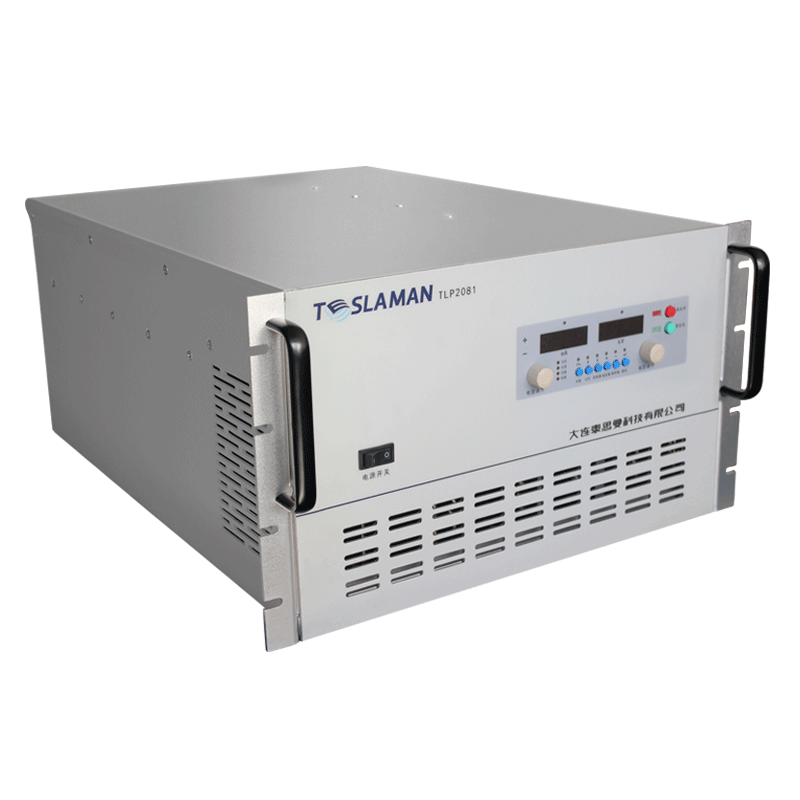Technical Challenges of High-Voltage DC Power Supplies in Medical Equipment
In the field of medical equipment, high-voltage direct current (HV DC) power supplies serve as critical energy components, with their performance directly impacting the safety, reliability, and therapeutic efficacy of the equipment. As medical technology evolves toward precision and intelligence, HV DC power supplies face multiple technical challenges in application, which involve not only the technical characteristics of the power supplies themselves but also the special requirements of medical environments.
1. Technical Bottlenecks in High-Precision Voltage Regulation and Ripple Suppression
Medical devices such as computed tomography (CT) and magnetic resonance imaging (MRI) impose extremely high requirements on power supply voltage stability. HV DC power supplies must achieve voltage fluctuation control within ±0.1% in microsecond-level time scales to ensure the magnetic field uniformity of imaging devices and the trajectory accuracy of particle accelerators. However, traditional linear voltage regulation technologies struggle to meet the needs of high-power scenarios due to excessive power consumption, while switching voltage regulation technologies, despite improved efficiency, introduce ripple noise in the order of tens of millivolts due to high-frequency switching actions. Such noise may interfere with the signal acquisition of medical sensors, leading to errors in monitoring physiological parameters such as electrocardiograms (ECG). The core technical challenge lies in how to achieve microvolt-level ripple suppression across a wide load range through composite voltage regulation topologies (such as linear-switching collaborative regulation) combined with adaptive control algorithms.
2. Reliability Design Challenges in Extreme Environments
Medical equipment often operates in harsh environments with high temperatures, high humidity, and complex electromagnetic interference (EMI), posing strict demands on the component selection and structural design of HV DC power supplies. For example, high-frequency electrosurgical units and radiofrequency ablation devices in operating rooms generate wide-band electromagnetic noise, which may cause logic disorders in power supply control chips. Additionally, hydrogen peroxide vapor used during disinfection may corrode the internal metal components of power supplies, affecting high-voltage insulation performance. To address these issues, fully sealed potting processes are required to enhance the protection level to IP67 or higher, and multi-layer electromagnetic shielding technologies (such as nanocrystalline alloy + copper foil composite shielding) must be employed to suppress EMI below -60dBμV. Furthermore, radiation-resistant ceramic capacitors and wide-temperature-range semiconductor components should be selected at the component level to ensure stable operation of the power supply within a temperature range of -20°C to 60°C.
3. The Contradiction Between Miniaturization and High Power Density
The proliferation of portable medical devices (such as wearable defibrillators and mobile DR devices) requires HV DC power supplies to develop toward compactness. However, high power density design increases the internal electric field strength, raising the risk of insulation breakdown. For example, a traditional 10kV/100W power supply has a volume of approximately 500cm³, while using gallium nitride (GaN) devices and planar transformer technology can reduce the volume to below 200cm³. However, this reduces the component spacing from 5mm to 2mm, placing higher demands on the dielectric strength of insulating materials. To resolve this contradiction, new insulating media (such as vacuum nanocoatings) and three-dimensional stacking packaging technologies must be introduced, while multi-physical field simulation (coupled analysis of electric fields, thermal fields, and stress fields) is used to optimize structural design, ensuring electrical clearance and creepage distance comply with IEC 60601 medical standards while improving power density.
4. Dual Constraints of Safety and Electromagnetic Compatibility
The safety of medical power supplies is directly related to the lives and health of patients and medical staff, requiring compliance with strict requirements in IEC 60601-1 for leakage current (≤100μA) and dielectric strength (≥4kVac). Parasitic capacitances in HV DC loops may cause excessive leakage current, while high-frequency harmonics generated by fast switching can interfere with nearby medical electronic devices. Therefore, multi-stage LC filter networks must be designed at the input and output of the power supply, combined with active clamping technology to suppress voltage spikes, and redundant insulation structures (such as double insulation layers + grounding shields) to enhance safety redundancy. Meanwhile, due to the特殊性 of the medical electromagnetic environment, the electromagnetic emissions of power supplies must comply with CISPR 11 Class B standards, with common-mode radiation reduced through layout optimization and decoupling design.
5. Intelligent Operation and Maintenance and Fault Prediction Technologies
Modern medical equipment tends to integrate intelligent diagnostic functions, requiring HV DC power supplies to have real-time condition monitoring and fault early warning capabilities. Traditional overvoltage and overcurrent protection mechanisms are post-event responses, struggling to meet the needs of preventive maintenance. Current research directions include: aging monitoring of inductor components based on vibration acoustic detection, prediction of insulation material degradation trends through dissolved gas analysis (DGA) in oil, and the use of machine learning algorithms to model power supply operating parameters (such as efficiency, temperature rise, and ripple) for early identification of potential faults. The application of such technologies can increase the mean time between failures (MTBF) of power supplies from 5,000 hours to over 10,000 hours, significantly reducing the risk of medical equipment downtime.
Conclusion
The technical challenges of HV DC power supplies in medical equipment essentially involve the dynamic balance between performance, reliability, safety, and volume-power consumption. With the development of new materials, new devices, and intelligent control technologies, these challenges will gradually be overcome through interdisciplinary integration (such as power electronics, biomedical engineering, and materials science) and the improvement of standardization systems, providing a more solid energy foundation for the technological innovation of medical equipment. In the future, intelligent HV power supply systems with high integration, high fault tolerance, and self-adaptability will become one of the core driving forces for the digital and precision development of the medical field.




















